ctau for B mesons is 388 um, with a boost of 2-3 gives a mean of 1.15 um for the decay distance.

| How to build PYTHIA | |||||||||||||
| Log in to rcas (rcas2067) | |||||||||||||
| topythia | cd's you to /phenix/workarea/hubert/event_gen/src/pythia/ | ||||||||||||
|
| builds executable gen_pythia_muon from the local gen_pythia_muon.f. In the .f file you can determine what particles to produce etc. | ||||||||||||
| How to run PYTHIA | |||||||||||||
| Log in to rcas (rcas2067) | |||||||||||||
| topythia | cd's you to /phenix/workarea/hubert/event_gen/src/pythia/ | ||||||||||||
| cd linux | to the 'run' directory | ||||||||||||
| emacs pythia.par | to set the # of events | ||||||||||||
| gen_pythia_muon | produces /phenix/data07/hubert/pythia/pythia_xxx.dat where xxx is a sequence number (stored in sequence.dat). Also produces pythia_027.hist, which is copied to /data07/ | ||||||||||||
| How to build PISA | |||||||||||||
|
See
the Pisa home page, about pisaLinker.csh
also these notes, which are an update of this page from John | |||||||||||||
| How to run PISA | |||||||||||||
| topisa | cd's you to /phenix/workarea/hubert/cvs4/simulation/pisa2000/wrk/myrun/ | ||||||||||||
| ln -sf <file> pythia.dat | where |
edit pisa.input | change the #events
|
| run PISA.
| Produces file PISAEvent.root
pisaRootRead | produces several files ancxxx.root from PISAEvent.root , where xxx is
the subsystem name.
| Rename ancsvx.root to ancsvx_nnn.root, and make a softlink from ancsvx.root to ancsvx_nnn.root. Here is a decription of what is in ancsvx.root
How to analyze the root file
|
ln -sf ancsvx_nnn.root ancsvx_softlink.root | macro below looks for ancsvx_softlink.root.
|
root -l | .x beauty05.C runs through the anc output file, produces beauty05.root
| rename to beauty05_xxx.root | |
******************************************************** * NTUPLE ID= 1000 ENTRIES= 10000 Pythia Particles ******************************************************** * Var numb * Name * Lower * Upper * ******************************************************** * 1 * Event * 0.100000E+01 * 0.100000E+05 * * 2 * Pid1 * -.130000E+02 * 0.130000E+02 * * 3 * Px1 * -.993957E+01 * 0.653895E+01 * * 4 * Py1 * -.545346E+01 * 0.739957E+01 * * 5 * Pz1 * -.283827E+02 * 0.208152E+02 * * 6 * Energy1 * 0.122965E+00 * 0.286432E+02 * * 7 * vertx * -.421301E+01 * 0.292651E+01 * * 8 * verty * -.464901E+01 * 0.405857E+01 * * 9 * vertz * -.151397E+02 * 0.161597E+02 * * 10 * x1 * 0.429273E-02 * 0.842110E+00 * * 11 * x2 * 0.412389E-02 * 0.776209E+00 * * 12 * xf * -.750181E+00 * 0.808152E+00 * * 13 * tau * 0.250574E-02 * 0.940052E-01 * ********************************************************(Convert to flat file containing vertx,y,z/10.0, using paw_batch.kumac)
| Vertex distribution is as shown on the right:
ctau for B mesons is 388 um, with a boost of 2-3 gives a mean of 1.15 um for the decay distance. | 
|
| Assignment of 'layers' has changed. Layer numbers 5-8 are the
North Si lampshades, and 9-12 are the South lampshades.
| 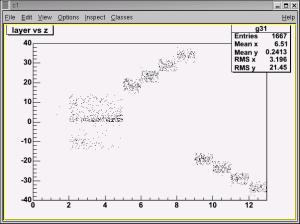
|
| Radiograph of all hits on all layers. Looks like the barrel
here has 3 layers, at 6, 8 and 10 cm.
| 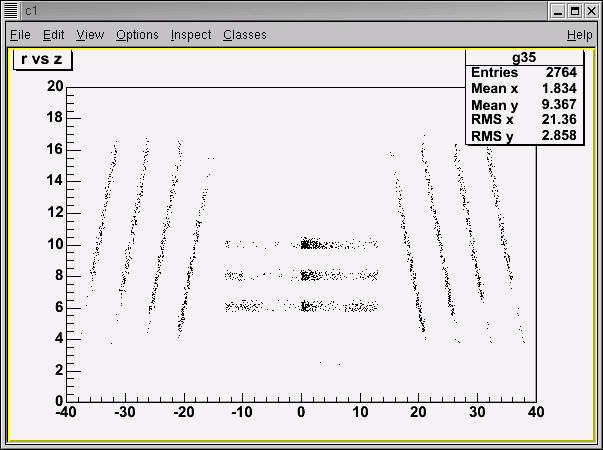
|
| Radiograph of all hits on the North, requiring that
all 4 planes are hit
| 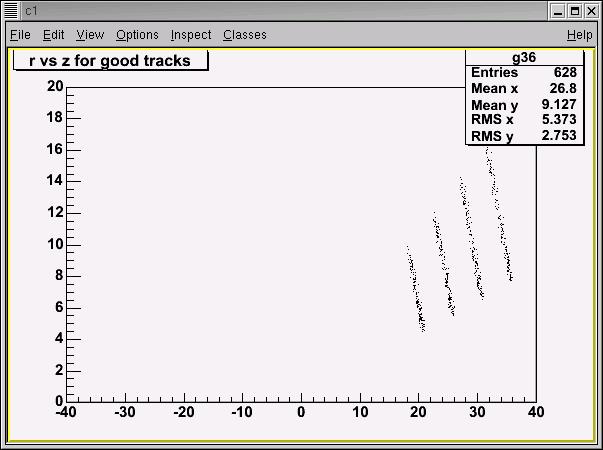
|
| The geometry is the old one, with 2x4 identical lampshades.
In the original, the total thickness of the lampshades is 224 um of Silicon. In the analysis, the r-positions of the hits are 'integerized' to simulate 50 um wide strips. | 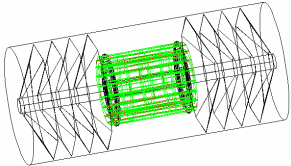
|
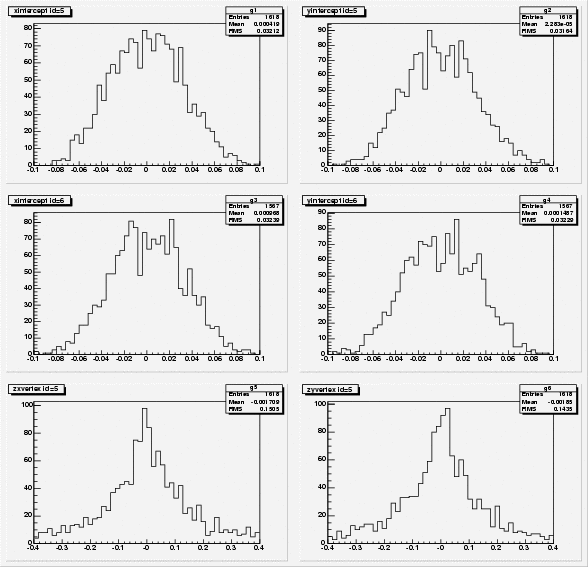 g01-06_p14.ps
g01-06_p14.ps
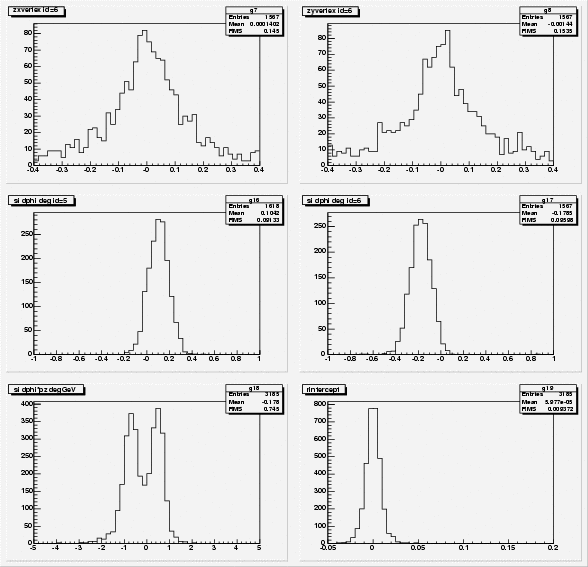 g07-19_p14.ps
g07-19_p14.ps
 g20-27_p14.ps
g20-27_p14.ps
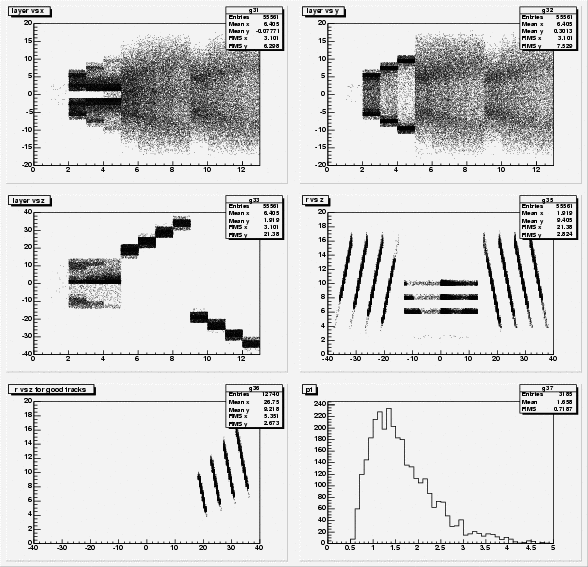 g31-37_p14.ps
g31-37_p14.ps